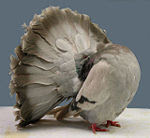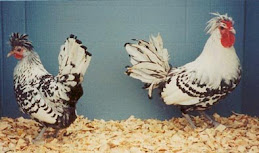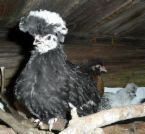
My silver sebright sakit lorrr siannye!!!!terpaksa kuarentin niee tuk seketika loorr harap harap cepat sembuh!!!!


Memelihara exotic Unggas seperti Ayam selasih,Burung Merak,Burung Kuang,Angsa Dan Turkey




 EEmmm klu ikut kan hati hendak je beli this spesis tapi mahal sangat la sampai 15k sepasang!! hanya mampu lihat Tan sri punya(mai farm) je yang sekarang dah dapat baby!!! tapi tak pe la azam tahun 2010 kumpul duit dulu nanti klu ade duit sket nak beli gak laaa!!! tapi yang confiuse kena ada lesen la plak!! scary la plak!! dah la nak dapatkan mahal end up kena masuk lokap plak!! scary la
EEmmm klu ikut kan hati hendak je beli this spesis tapi mahal sangat la sampai 15k sepasang!! hanya mampu lihat Tan sri punya(mai farm) je yang sekarang dah dapat baby!!! tapi tak pe la azam tahun 2010 kumpul duit dulu nanti klu ade duit sket nak beli gak laaa!!! tapi yang confiuse kena ada lesen la plak!! scary la plak!! dah la nak dapatkan mahal end up kena masuk lokap plak!! scary la Sob!!sob!! sodeh laa femail ringneck tempang tak tahu kena apa!! rasa-rasa ada pemangsa la sbb malam 2 ade bunyi bising kat cage dia!! ayam-ayam kampung habis terbang keluar reban!! yang menjadi tanda tanya adakah ianya musang berjangut atau cik tie....kus yang selalu mencuri my little chick!!so kepada sesapa ade petua atau tok bom boleh la bagi petua supaya tiada ganguan di malam hari ye!!!
Sob!!sob!! sodeh laa femail ringneck tempang tak tahu kena apa!! rasa-rasa ada pemangsa la sbb malam 2 ade bunyi bising kat cage dia!! ayam-ayam kampung habis terbang keluar reban!! yang menjadi tanda tanya adakah ianya musang berjangut atau cik tie....kus yang selalu mencuri my little chick!!so kepada sesapa ade petua atau tok bom boleh la bagi petua supaya tiada ganguan di malam hari ye!!!%5B1%5D.jpg) "Asam digunung garam dilaut dalam tempurung bertemu jua"akhirnya betemu jodoh jugak my pegeon setelah sekian lama menduda!!! sianyeeee kebetulan semasa beli black silky jumpa si dara sunti yg putih lagi suci so i've decide jodoh kan si teruna dan si dara!!!! semoga jodohnya berkekalan la hendaknye!!!
"Asam digunung garam dilaut dalam tempurung bertemu jua"akhirnya betemu jodoh jugak my pegeon setelah sekian lama menduda!!! sianyeeee kebetulan semasa beli black silky jumpa si dara sunti yg putih lagi suci so i've decide jodoh kan si teruna dan si dara!!!! semoga jodohnya berkekalan la hendaknye!!! 
 Gray Turkey
Gray Turkey
 Bronce Turkey
Bronce Turkey The Pure Bread Turkey!!!
The Pure Bread Turkey!!!

Islamic Art In Istanbul Turkey
 Para penonton bapak-bapak,ibu-ibu!!!!! semua yang ada di sini eh macam inul goyang gerudi la plak!!hehehe sebenernyee mintak maaf sangat terlari tajuk blog unggas tetiba plak ade ruminan!!! sebenarnye dah lama pelihara kambing barbados blackbally niee!!! terlupa nak cerita kat ruangan ni!! apa pun thanks pada kak young daripada Mai Farm kerana bagi discount beli kambing ni!!! masa beli 2 kecil je tapi sekarang dah cecah berat 60 kg!!!! gumukk sangat!!! seronok dan senang pelihara dia yg penting zero percen makanan!!!! hanya makan rumput je tapi klu jual bleh cecah harga 2-3k seekor la awakkkkk!!!!
Para penonton bapak-bapak,ibu-ibu!!!!! semua yang ada di sini eh macam inul goyang gerudi la plak!!hehehe sebenernyee mintak maaf sangat terlari tajuk blog unggas tetiba plak ade ruminan!!! sebenarnye dah lama pelihara kambing barbados blackbally niee!!! terlupa nak cerita kat ruangan ni!! apa pun thanks pada kak young daripada Mai Farm kerana bagi discount beli kambing ni!!! masa beli 2 kecil je tapi sekarang dah cecah berat 60 kg!!!! gumukk sangat!!! seronok dan senang pelihara dia yg penting zero percen makanan!!!! hanya makan rumput je tapi klu jual bleh cecah harga 2-3k seekor la awakkkkk!!!! Emmm!!! nampaknye bleh tengok gambar je la!!!!sedihh huhuhu!!!walau pun spesis ni banyak terdapat di hutan hujan tropika di semenanjung,sabah dan serawak tetapi spesis ini(Ayam Hutan)masih didalam kawalan jabatan perhilitan ini adalah kerana spesis ini masih dilindunggi.tapi tak pela sekurang 2xnyee spesis ini ade ok jerrr!!!!
Emmm!!! nampaknye bleh tengok gambar je la!!!!sedihh huhuhu!!!walau pun spesis ni banyak terdapat di hutan hujan tropika di semenanjung,sabah dan serawak tetapi spesis ini(Ayam Hutan)masih didalam kawalan jabatan perhilitan ini adalah kerana spesis ini masih dilindunggi.tapi tak pela sekurang 2xnyee spesis ini ade ok jerrr!!!! Angsa ini berasal dari fran berbeza dari angsa tempatan!!! dan jga saiznya lebih besar dari angsa tempatan!!! susah gak nak dapat spesis ni kebetulan masa jenjalan makan angin di kuantan terjumpa la org bela spesis ni itupun dapat 2 ekor je!!! teringat cerita "the cave of the golden roses!! ingat tak cerita 2!!! pelakon dia Romouldo and fantagiro emmmmm lazat!!! apa pun thank pada uncle Zaidi and family
Angsa ini berasal dari fran berbeza dari angsa tempatan!!! dan jga saiznya lebih besar dari angsa tempatan!!! susah gak nak dapat spesis ni kebetulan masa jenjalan makan angin di kuantan terjumpa la org bela spesis ni itupun dapat 2 ekor je!!! teringat cerita "the cave of the golden roses!! ingat tak cerita 2!!! pelakon dia Romouldo and fantagiro emmmmm lazat!!! apa pun thank pada uncle Zaidi and family
.jpg)


%5B1%5D.jpg)














